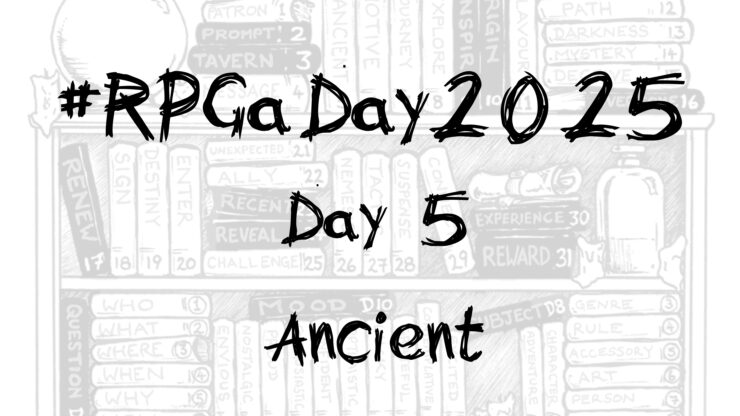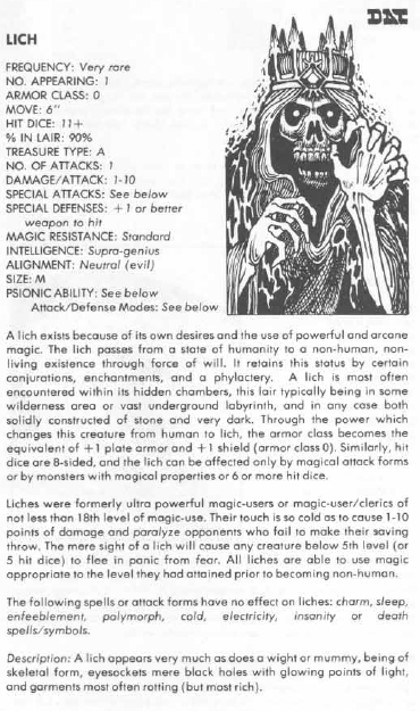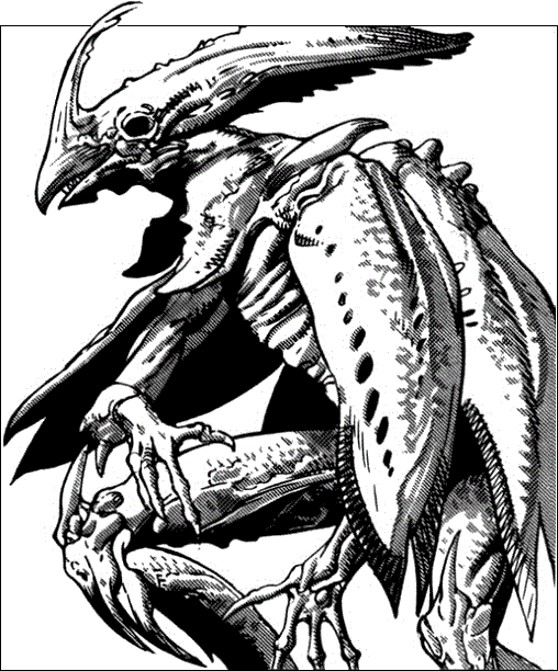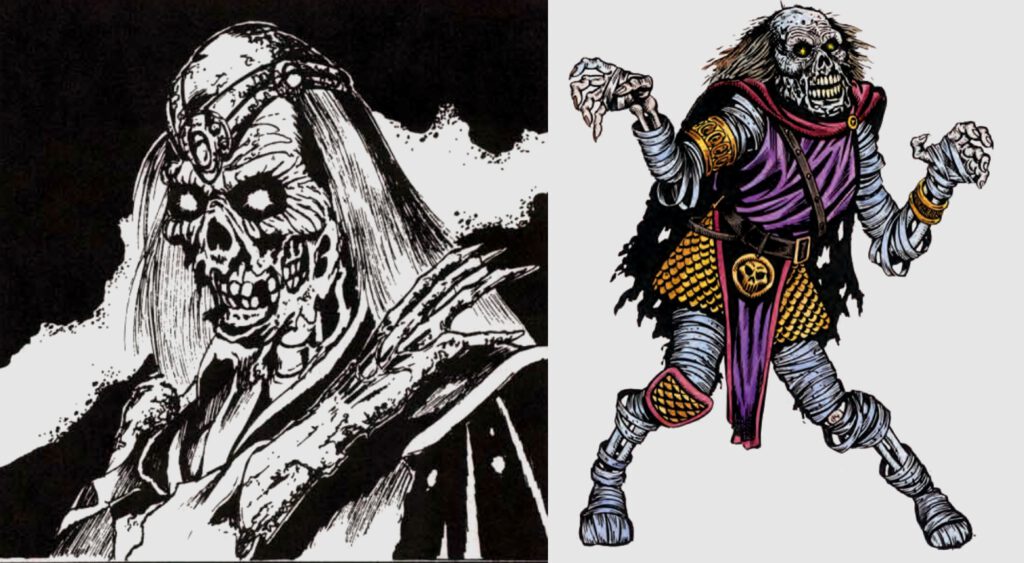After yesterday’s heady post, I am aiming for a more easily approachable post. Let’s talk about today’s prompt, Ancient.
Which reminds me of another pop-culture reference. Remember this guy?
When I think about Ancient, I immediately think of a Lich in fantasy role-playing games. Mumm-Ra seems like a Lich, but I knew about the D&D concept of a Lich, i.e., a powerful undead wizard or cleric, from reading the AD&D 1e Monster Manual. Here is that entry:
From reading that entry, I just knew this was a special monster. I’ve always been a particular Game Master (GM) who wants to plan for long-term adventure ideas, looking at certain monsters and not wanting to simply throw them at the players, knowing I want to do something special with them. It was like that with Tiamat, Orcus the Tarrasque, and the Lich.
I don’t recall using a Lich in an AD&D 1st edition game. However, a mighty Lich was a major antagonist in our AD&D 2e campaigns. A former noble wizard from ancient times, corrupted by his lust for power, he was an antagonist in two campaigns, eventually awakening a dracolich in a necropolis on the campaign world’s moon that the party defeated with a fantasy mecha, a Spelljammer Spirit Warrior (that’s the Monstrous Compendium vol. 9 image for the Spirit Warrior below). However, they were unable to stop the Lich’s evil plans, and he became a god!
During a D&D 3rd edition campaign, another lich was also an antagonist. The idea of a Lich’s phylactery has always been part of my fascination with the creature. I think I understood what the phylactery was upon reading the AD&D 2nd edition entry for the Lich; the description read as follows:
“In order to become a lich, the wizard must prepare its phylactery by the use of the enchant an item, magic jar, permanency and reincarnation spells. The phylactery, which can be almost any manner of object, must be of the finest craftsmanship and materials with a value of not less than 1,500 gold pieces per level of the wizard. Once this object is created, the would-be Lich must craft a potion of extreme toxicity, which is then enchanted with the following spells: wraithform, permanency, cone of cold, feign death, and animate dead. When next the moon is full, the potion is imbibed. Rather than death, the potion causes the wizard to undergo a transformation into its new state. A system shock survival throw is required, with failure indicating an error in the creation of the potion which kills the wizard and renders him forever dead.”
Don’t you just love that description?
The Lich in the 3rd edition campaign was a thorn on the character’s side, and they wanted to locate the phylactery to destroy him once and for all. But, despite their exhaustive search, they could not find it. Turns out the Lich had enslaved an Inevitable and tasked it with endlessly traveling across the campaign world, protecting the phylactery. The characters could not magically find the ensorcelled phylactery, but they found the Inevitable, defeated it, and used the phylactery to defeat the Lich.
I liked these two antagonists and feel that I did right by truly making these ancient creatures, truly formidable opponents.
Do you like ancient liches? What other ancient creatures do you use as antagonists in your games? Have you done anything new or different with a Lich’s phylactery?
I would love to read your comments here in the blog, or tag me in your replies, wherever you make them. If you choose to join in the conversation, don’t forget to tag your entry with the #RPGaDay2025 hashtag so the community can find your contribution. See you in the next post!





